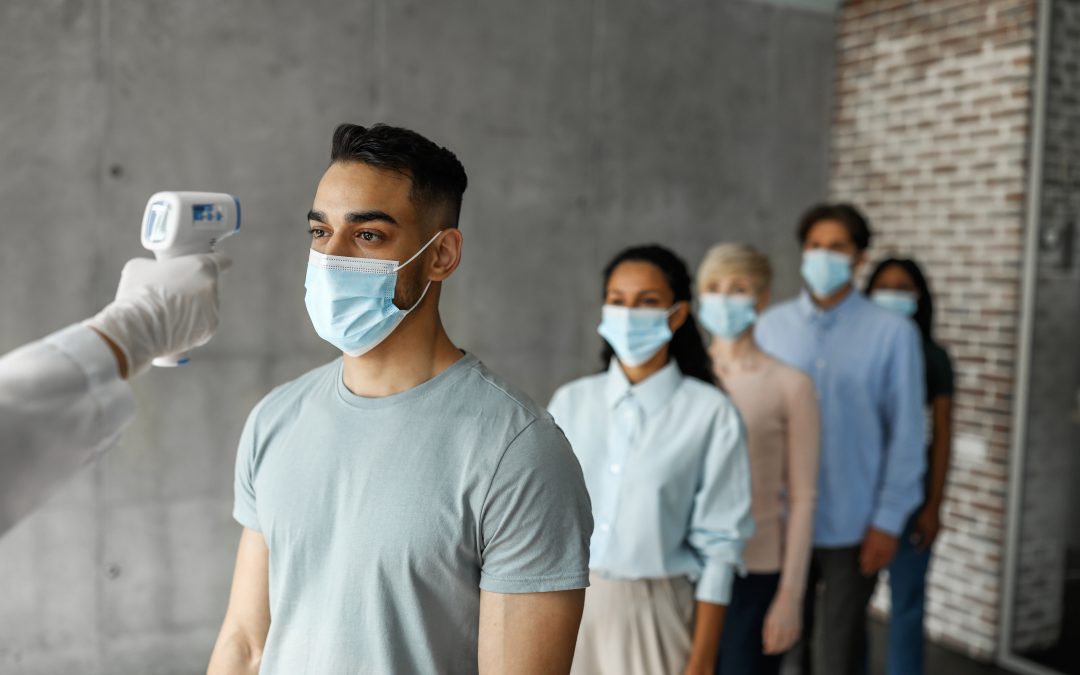All long-term care facilities must monitor the temperature of all who enter the facility as part of the CMS (Centers for Medicare and Medicaid) protocols for the employee COVID-19 screening process as mandated.
These requirements are subject to change and updates. “What’s New & Updated” section at the CDC provides ways for facilities to stay current with requirements. Facilities should also implement their own corporate and local protocols for employee COVID-19 screening for temperature checks.
What Is A Fever?
- Symptom of Infection
- Common COVID-19 symptom
- 100.4 Degrees Fahrenheit temperature or greater
Why Is 100.4 Considered A Fever?
Clinicalcorrelations.org cited the common determination of a fever. It was determined in 1868 by Carl Reinhold August Wunderlich. How Wunderlich recorded and analyzed this gigantic amount of data in an era before computers and statistical software is questionable at best, but over a century later, his definition is still largely accepted.”
- Wunderlich analyzed over 1 million temperature readings from 25,000 patients.
- He found the average temperature of a healthy person was 98.6 F and concluded 100.4 F was the fever range.
- Wunderlich’s definition is still largely accepted and applied to COVID-19 fever screening practices.
Facilities should prepare to:
- Train staff to take and record accurate temperatures
- Educate employees how to immediately report a fever concern
- Recheck temperatures for accuracy and documentation
Dealing With Potential Concerns
There are usual protocol steps that must be taken if an employee COVID-19 screening shows a staff member has a temperature of 100.4 F or higher.
- The employee must leave facility immediately.
- A COVID-19 test is recommended for the employee.
- Facility policy and procedures must be followed by the employee prior to his or her returning to work.
A facility will have different protocols for visitors and employees.
They will deny entry to visitors showing signs of COVID-19 and recommend that those individuals be tested. The facility must be understanding and not make any visitor uncomfortable. However, protocols will determine if he or she is not allowed into the facility.
All staff members need to be prepared because some visitors may become upset or angry rather than understanding. In these challenging times, the facility can offer support options to try to defuse any possible conflicts.
Requirements will vary between facilities. Signs are usually posted at front entrances to inform the public of any current restrictions.
Handling the Employee COVID-19 Screening Process
Facilities should designate staff to conduct every employee COVID-19 screening. Staff who use a friendly approach are more able to complete the process quickly and efficiently. Employees adapt easily to the screening process and understand the importance.
The Digital Temperature Check
It seems contrary to common knowledge but there are various ways to take a temperature. Taking a person’s temperature can be defined as: “To use a thermometer to find out if someone has a fever”.
Facilities will most commonly use a form of digital thermometer to conduct every employee COVID-19 screening.
- They are quick and easy to use.
- Some brands are very cost effective.
- The accuracy performance levels are good.
- They are easy to clean and maintain.
- Options for a no skin contact are available.
- They are considered a non invasive method that is suitable for screening.

Troubleshooting Thermometers
Facility staff needs to take into account that there will be occasions when their thermometer may malfunction. By taking the temperature twice, it will become more obvious if there is a problem. A replacement should be readily available in the event it is needed.
Some indications of a product not operating properly are:
- Product lighting becoming very dim
- Unusual readings (eg 78.2F would be identified as an error by an experienced screener)
- Product will not switch back on or show any reading
Some malfunctions may just require a change of batteries. Always read the manufacturer’s guidelines to operate the product properly and the most efficiently.
Thermometers using mercury are no longer widely accepted. There are a plethora of choices for the best types of thermometers to use.
Benefits of a Temperature Tracker System
A strong software system can be a great tool in tracking and reporting for all employee COVID-19 screening processes. In addition to the information it can store, the software can be utilized to look into any unusual concerns.
Sometimes unique events occur. Here is an example that could happen in any facility:
One Employee’s Story
- An employee started a new job in a facility.
- A digital temperature reading was listed at 99.7F.
- A second reading provided an identical result.
- This employee stated she has not been sick and has no current sickness symptoms.
- A COVID-19 test was conducted and the result determined a negative COVID-19 result.
- The facility recorded the documentation and instructed the employee to wear a mask when in the facility at all times.
- The facility conducted usual temperature checks on the employee.
- The software system can show over time that this employee had temperatures deemed normal on a consistent basis.
Trained staff should be able to establish early in the screening process if there is something that needs further investigation.
A software system can be set up to generate various reports for analysis and review. These reports can identify those employees who may have had COVID-19 in the past and those that may have received the vaccination. More importantly, the system can be set up to accumulate the information needed to complete (CDC and/or CMS) required reports concerning the employee COVID-19 screening.

